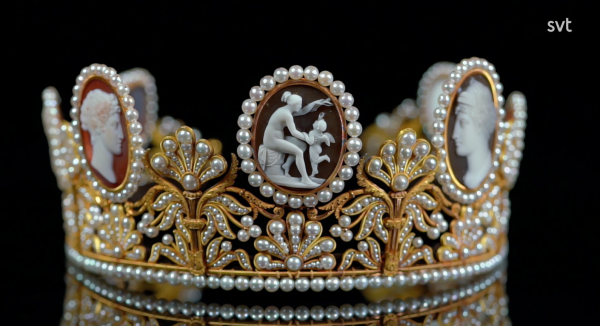 |
| SVT |
The unique gold, pearl, and cameo tiara from the Swedish royal vaults is packed with history and symbolism, from its initial creation story in Napoleonic France to the tales told by the individual cameos in the piece. Today, we’re unpacking both, with some fantastic close-up views of the parure.
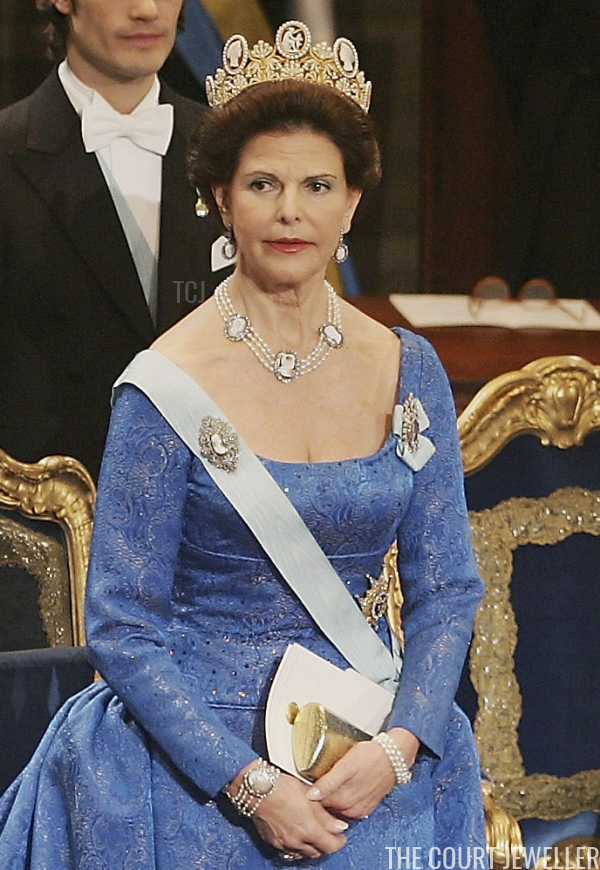 |
| Pascal Le Segretain/Getty Images |
The Cameo Parure, now owned by the Bernadottes of Sweden, was originally given by Napoleon I to Empress Josephine in 1809. The set includes a tiara, a necklace, a bracelet, and a pair of earrings. Today, the parure also includes a brooch, which is believed to be a slightly later addition to the suite. Above, Queen Silvia wears the entire parure—tiara, earrings, necklace, brooch, and bracelet (on her right wrist)—for the Nobel Prize ceremony in 2005.
The tiara made its way from imperial France to royal Sweden by a slightly circuitous route. It was inherited by Josephine’s son, Eugene de Beauharnais, and then passed on to his daughter, Queen Josefina of Sweden and Norway. She bequeathed the cameos to her daughter, Princess Eugenie; she bequeathed it to her nephew, Prince Eugen. He gave the set to Princess Sibylla, mother of the present king, as a wedding gift in 1932, and it has remained with the Bernadottes in Stockholm ever since.
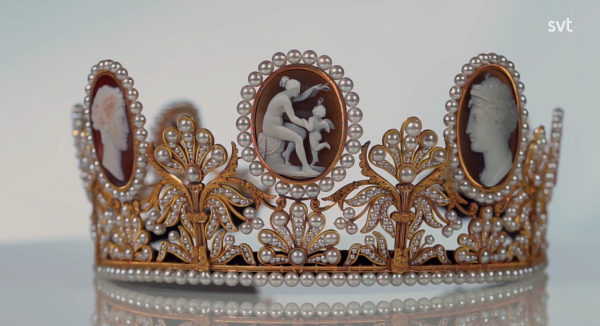 |
| SVT |
The tiara is an example of an early nineteenth-century jewel that manages to be impressive without a single diamond. Seed pearls set in red gold form anthemion designs, encircle the cameos, and dot the base.
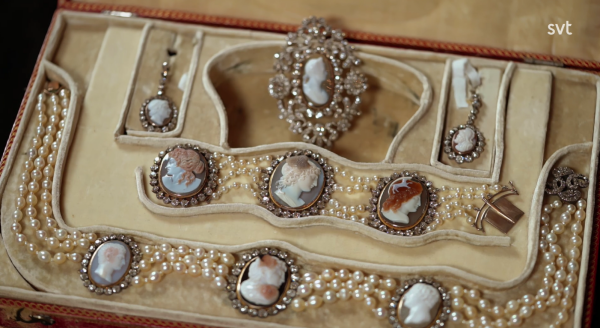 |
| SVT |
Here’s a look at the rest of the set in its fitted case. These cameos are all ringed in diamonds. The bracelet and necklace feature strands of pearls between the cameos, while the earrings and brooch are all-diamond pieces. It’s often said that the brooch wasn’t made to go with the original set, a theory that is reinforced by the shape of the box. Note that the place where the brooch sits is shaped to fit a hair comb, not the brooch; the set likely originally included a comb that has now been separated from the rest of the jewels.
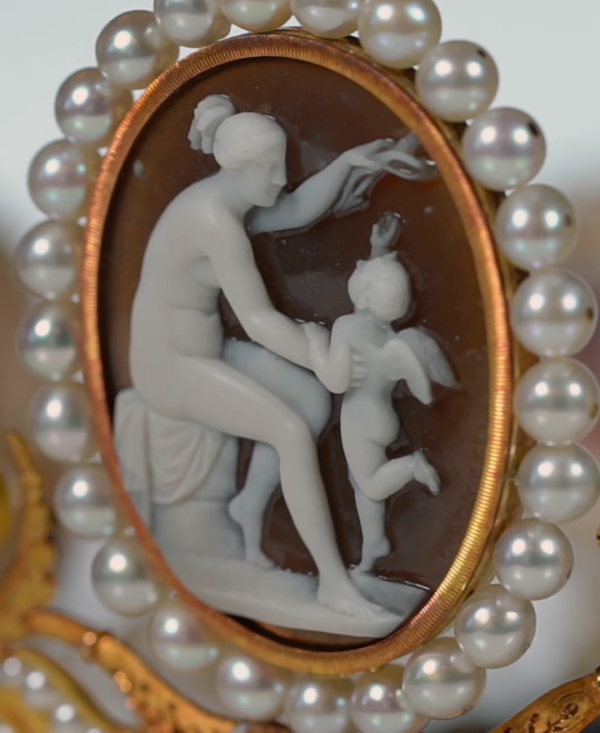 |
| SVT |
The cameos themselves are a marvel. In the recent documentary about the Swedish royal jewels, expert Cecilia Andren estimates that some of the individual cameos could have taken as long as a year to carve. During the filming of the series, it was discovered that some of the cameos are signed. This is the center cameo from the tiara, made by Giuseppe Girometti. His signature is just visible along the edge of the cameo.
This is one of three cameos from the set that features a tableau rather than a portrait. The two figures depicted here are Venus, goddess of beauty and love, and her son, Cupid, god of passion and desire. See Cupid’s little wings? He’s reaching for his bow and arrow, which are held by his mother. (Paintings featuring Venus disarming Cupid were popular in the Renaissance era.) The Swedish royals love a jewel with a Cupid theme—they also own a gorgeous diamond arrow brooch. Appropriately, Crown Princess Victoria wore both jewels during her wedding celebrations in 2010.
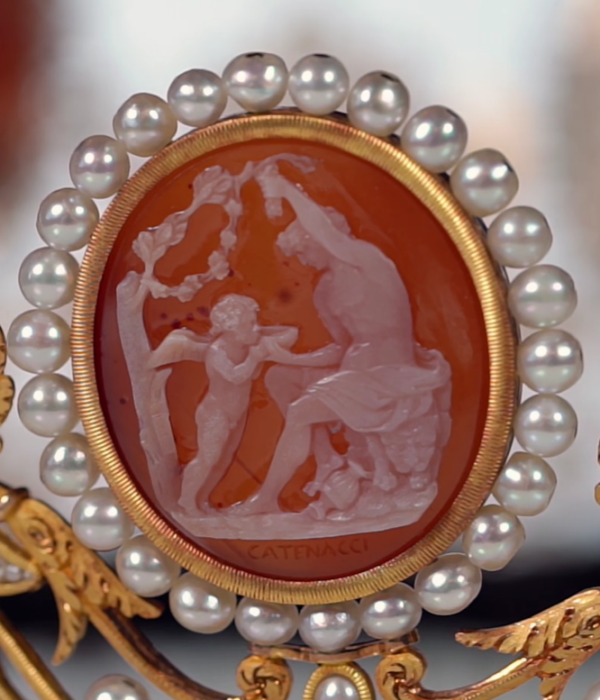 |
| SVT |
Another of the cameos featuring a mythological scene was carved by Vincenzo Catenacci and features Cupid, again identified by his little wings, with Bacchus, the god of wine. Bacchus, who appears to be seated on a lion, offers a goblet of wine to Cupid, who drinks eagerly. I think we can all fill in the blanks symbolism-wise, with the god of passion and desire combined with wine! These two gods are also often depicted together in other similar works of art, including this relief sculpture by Bertel Thorvaldsen.
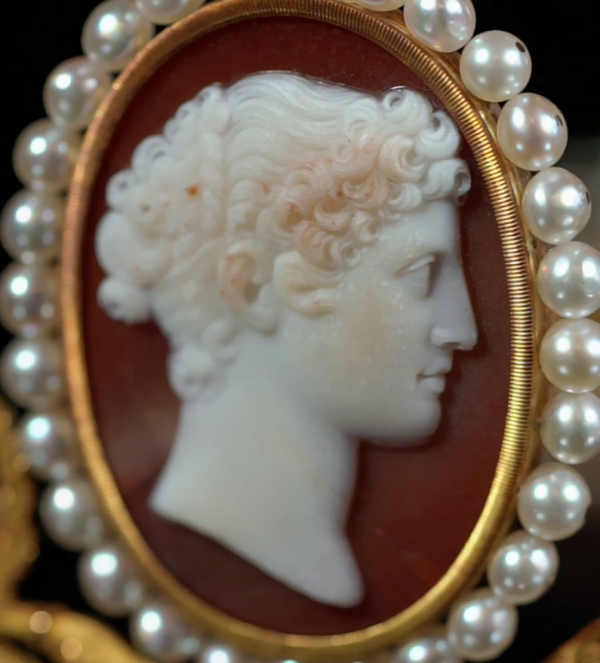 |
| SVT |
Most of the rest of the cameos in the set are portraits, many also depicted other gods and goddesses. Some are easy to identify; others have features that feel a little more generic. This is one of the figures featured on the tiara near the center Venus and Cupid cameo.
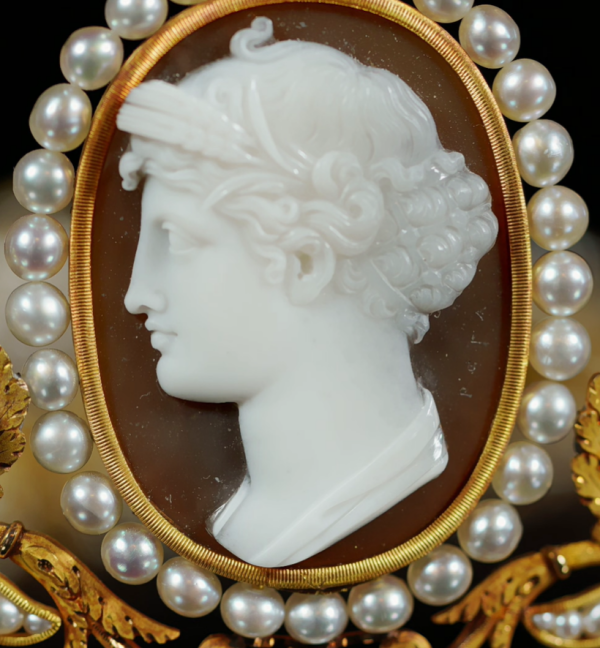 |
| SVT |
This cameo, which is positioned on the other side of the Venus and Cupid cameo, almost certainly depicts Ceres, goddess of the harvest. Note the sheaf of wheat tucked behind her ear! The cameo was made by Filippo Rega, who signed his name in Greek letters on the edge of the piece. It’s similar in design to a cameo found in the Metropolitan Museum of Art in New York.
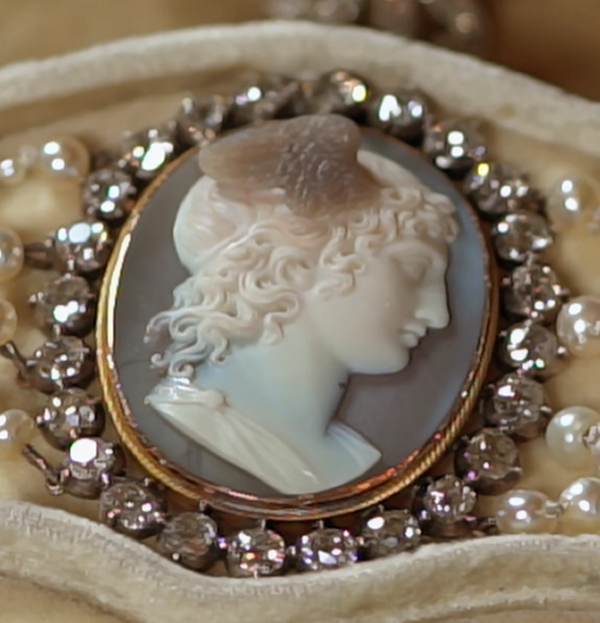 |
| SVT |
This cameo is part of the set’s bracelet. It’s another fairly easy-to-identify god: the wings on the figure’s head mean that this is probably Mercury, the messenger god of commerce.
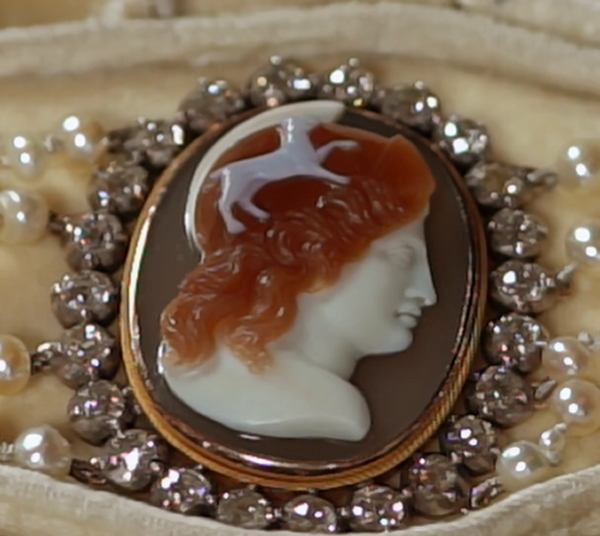 |
| SVT |
Here’s another close-up view of a cameo from the bracelet. This one features a goddess wearing a helmet emblazoned with a horse. It’s almost certainly Minerva, goddess of wisdom and justice. The brooch features another portrait cameo; there are also three more in the necklace, and two more in the earrings. You can spot some of them in our previous close-up post on the parure.
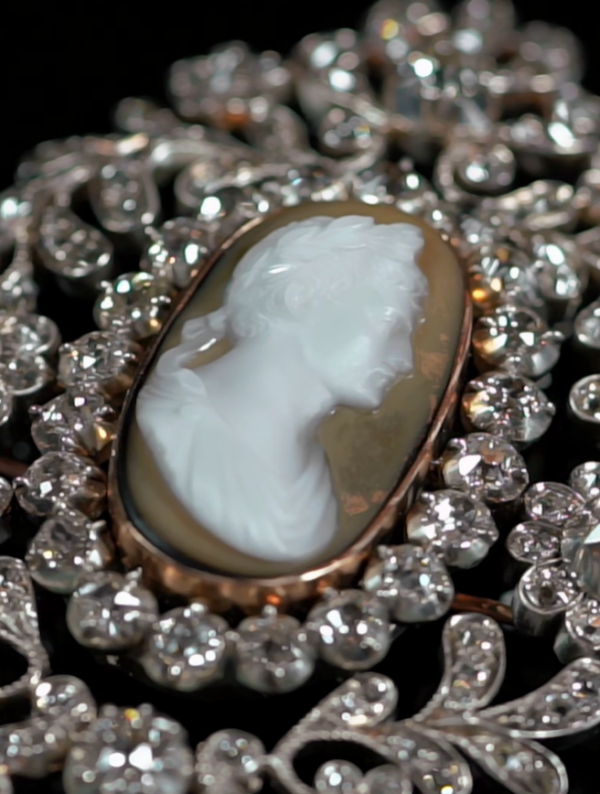 |
| SVT |
The cameo in the center of the diamond floral brooch features a typical portrait of a Roman emperor, crowned with laurel. But in the documentary, expert Goran Alm confirms that the man depicted in the cameo is none other than Napoleon Bonaparte himself. The emperor was fond of iconography that connected him to the rulers of antiquity, and this cameo appears to be an example of that imagery.
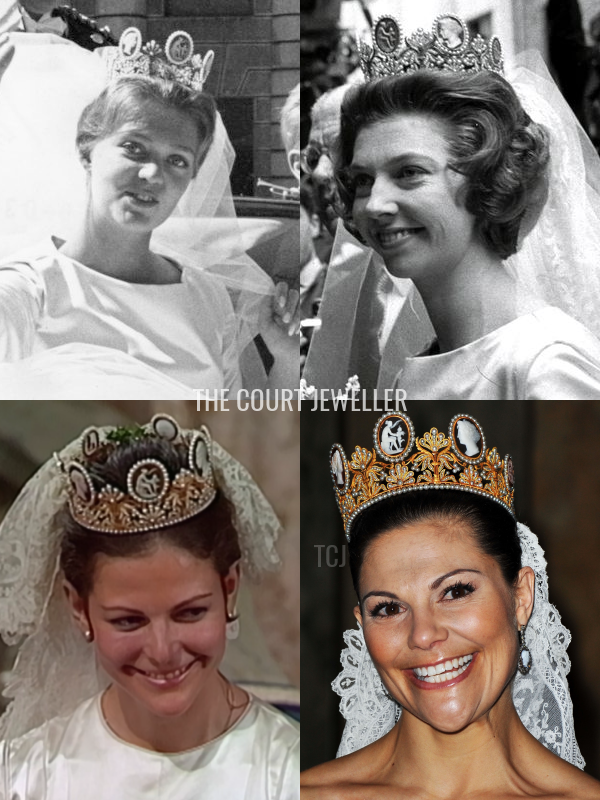 |
| Wikimedia Commons, SVT, Pascal Le Segretain/Getty Images |
With a central cameo depicting two gods of love, and a shape resembling traditional Scandinavian bridal crowns, it’s no surprise that this fragile, delicate heirloom has become the Bernadotte family bridal tiara. It’s been worn by two of the king’s sisters, Princess Birgitta and Princess Desiree, on their wedding days. It was also worn by his wife, Queen Silvia, at their wedding in 1976, and by their elder daughter, Crown Princess Victoria, at her wedding in 2010.
Leave a Reply